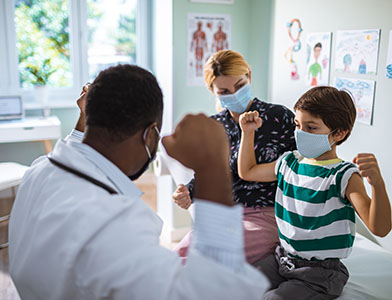Addressing Chronic Conditions to Reduce Disparities in Health Outcomes
 As advances in public health interventions and medical care continue at a rapid pace, the U.S. population is living longer and healthier lives. However, with these advances also comes an increase in chronic conditions. Chronic conditions are those that last for a year or more and require continuing care, disrupt the daily activities of living or both.
As advances in public health interventions and medical care continue at a rapid pace, the U.S. population is living longer and healthier lives. However, with these advances also comes an increase in chronic conditions. Chronic conditions are those that last for a year or more and require continuing care, disrupt the daily activities of living or both.
Chronic conditions are the leading cause of death and disability in the U.S. Chronic disease prevalence is driven by multiple factors, most of which are tied to social determinants of health (SDOH). As result, disparities in chronic disease prevalence and outcomes are striking. Nationwide, African American and Latinx adults have higher rates of age-adjusted diabetes, high blood pressure and obesity, and African Americans have higher cancer mortality rates than all other racial and ethnic groups.
Racial and ethnic disparities are further exacerbated by economic disparities, as low-income community members are also disproportionately impacted by chronic disease. SDOH play a large role in creating environments that are conducive to higher rates of chronic conditions and at the same time hinder access to medical care to screen for and manage chronic conditions. CareFirst BlueCross BlueShield (CareFirst) works with community partners to strengthen their capacity to drive systemic change in communities with a high burden of chronic disease, and to develop environments in which all community members can thrive.
How We Provided Support
In the COVID-19 pandemic, chronic conditions were of special concern, both because patients with certain chronic conditions were at higher risk of serious complications or death due to COVID infection, but also due to the barriers the pandemic created to screening and ongoing care for chronic conditions.
Grantee Spotlight
Nueva Vida
The COVID-19 pandemic led to dramatically lower rates of preventive cancer screenings, especially among vulnerable populations such as those with limited English proficiency. We invested in a multi-level engagement program to increase preventive cancer screening and support in Spanish for underserved Latinx immigrants in the DC metro area through our community partner, Nueva Vida.
Nueva Vida is a trusted community partner with a strong understanding of the barriers to cancer screening and treatment among the Latinx population, including mistrust of the medical system.
As described by our partner, “Nobody wants to be treated like a guinea pig and for participants who don’t speak English and who have been treated unfairly it is vital to address and overcome suspicion and doubt.” Nueva Vida aimed to improve access to breast cancer screening and provide culturally competent and empathetic support services in Spanish for Latina women.
The project overperformed on all metrics for success, reaching more than three times the number of anticipated beneficiaries.
Read our complete 2021 Community Impact Report.